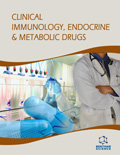Abstract
Nasal delivery of influenza vaccines offers several advantages when compared with parenteral administration. First, nasal immunization induces both mucosal secretory IgA (SIgA) as well as blood-derived antibodies (Abs) while parenteral delivery only induces the latter type of response. Second, nasal delivery induces cell-mediated immunity (CMI) including cytotoxic T lymphocyte (CTL) responses in both mucosal and parenteral lymphoid tissues. Finally, it has established now that mucosal delivery of influenza vaccines induces effective homologous as well as heterosubtypic immunity to influenza virus strains. Generally, influenza vaccines developed thus far include inactivated virions, subcomponents including the surface components hemagglutinin (HA) and neuraminidase (NA) or live-attenuated influenza vaccines (LAIV), all of which have been used successfully when given nasally to experimental animals. Thus far, only one LAIV for human, i.e., FluMist® has been approved and used as a nasal vaccine in USA. However, the use of FluMist® is restricted to healthy individuals two - fifty years old. Further, LAIVs have a potential risk of secondary transmission of the vaccine virus from recent vaccinees to non-immune, high-risk individuals. Inactivated, component-based influenza nasal vaccines require a mucosal adjuvant in order to be effective. However, use of a classical enterotoxin-based adjuvant given nasally with influenza vaccine elicited the Bell’s palsy syndrome at an unacceptable level and was withdrawn from the market. To this end, new safe and effective mucosal adjuvants have developed which are currently being tested in humans. Finally, recombinant HA and new generation of NA proteins are being developed in egg-free, cell- or tissue-culture systems. In summary, new generation of licensed nasal influenza vaccines are being developed through a better understanding of the innate a acquired mucosal immune system.
Keywords: Influenza, LAIV, Mucosal immunity, nasal immunization, Secretory IgA, vaccine.
Graphical Abstract
 29
29

